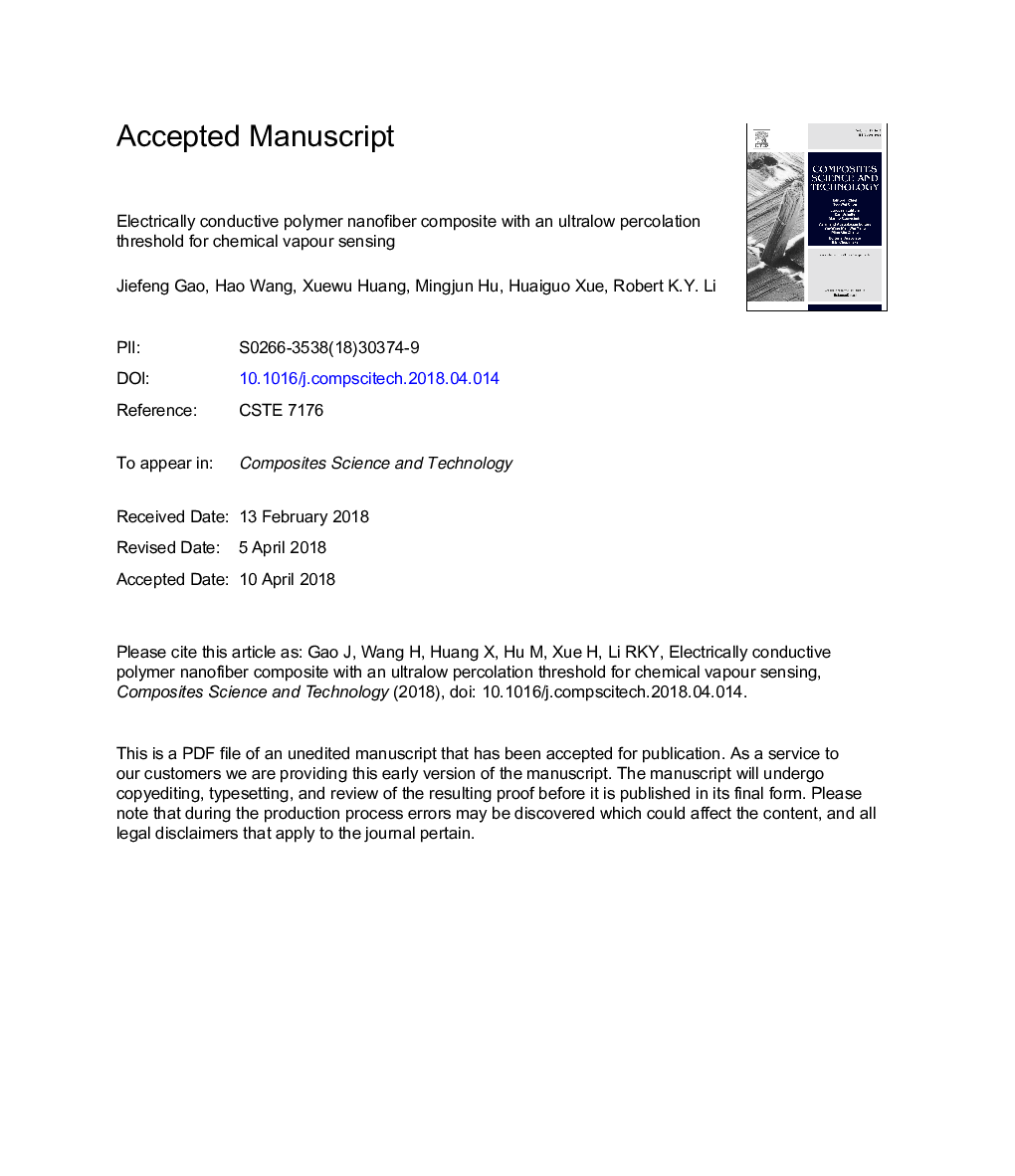| Article ID | Journal | Published Year | Pages | File Type |
|---|---|---|---|---|
| 7214454 | Composites Science and Technology | 2018 | 23 Pages |
Abstract
A flexible conductive polymer nanofiber composite (FCPNC) was prepared by carbon nanotube (CNT) decoration onto the blend polyurethane (PU)/Polyethersulfone (PES) nanofibers under the assistance of ultrasonication. CNTs were uniformly distributed on the nanofiber surface, which was beneficial to the construction of electrically conductive network. The obtained composite mat possessed an ultralow percolation threshold of 0.056â¯vol%, and the electrical conductivity was as high as 2.8â¯Sâ¯mâ1 at a relatively low CNT concentration of 0.85â¯vol%. Also, the introduction of CNTs increased both the tensile strength and Young's modulus of the nanofiber mat. The FCPNC with good electrical conductivity and interconnected porous structures was then used as a chemical vapour sensor, which was based on the change of the distance among the conductive nanofibers and hence the electrical conductivity, resulting from the adsorption and desorption of organic vapours. The sensing selectivity of the FCPNC was determined by the solubility parameters as well as the saturated vapour pressure. When the FCPNC with a CNT content of 0.5â¯vol% was exposed to the acetone vapour, the response intensity (RI) could reach â¼8.8â¯Ãâ¯102, while the response rate (RR) was only 9â¯s. The resistance was able to return to its original value when the sample was taken out from the vapour to air, and the RI could retain 90% after tenth cycle test, displaying a good reproducibility.
Keywords
Related Topics
Physical Sciences and Engineering
Engineering
Engineering (General)
Authors
Jiefeng Gao, Hao Wang, Xuewu Huang, Mingjun Hu, Huaiguo Xue, Robert K.Y. Li,
